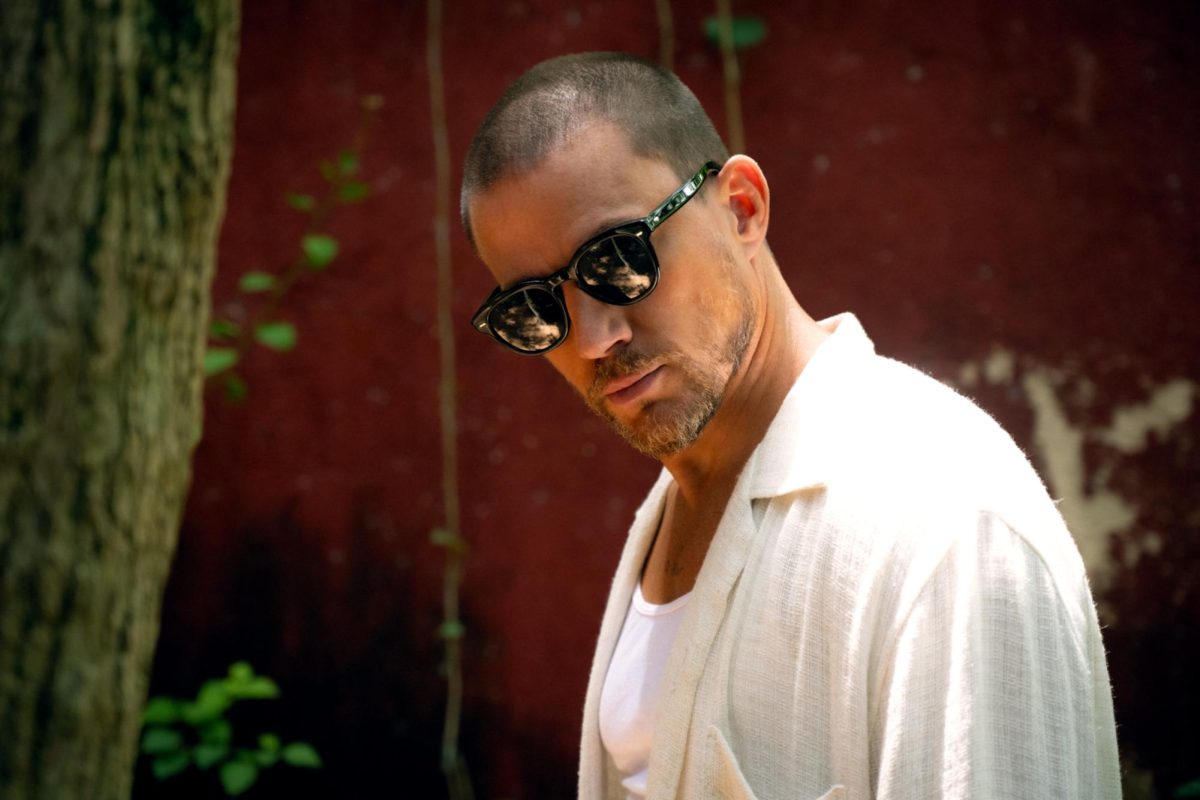After a whirlwind night out, Frida (Naomi Ackie) and Jess (Alia Shawkat), both struggling cocktail waitresses find themselves on an exclusive private island owned by billionaire tech mogul, Slater King (Channing Tatum). While on King’s island, Frida and Jess are intoxicated by the wealth that surrounds them.
Along with the other guests on the island, the pair falls into a trap of hedonism that feels endless. Enjoying long days by the pool, glasses of champagne that never seem to run out, extravagant dinners cooked by King’s friend Vic (Christian Slater) and expensive perfumes for all the girls on the island. The luxury getaway takes a turn when Jess unexpectedly disappears one morning and Frida is forced to uncover the incredibly sinister secret that is buried deeply beneath the glamor of the island.
Symbolic Use of Color
“Blink Twice” is a movie filled with bold colors and eye-catching cinematography. The tropical oasis is plastered with scarlet reds, canary yellows and royal blues. The characters are donned in almost exclusively white clothing. Each scene looks like a day on a private island would feel.
Zoë Kravitz, in her directorial debut uses color not only as a pleasing visual, but also as symbolism for what is really happening on the island. With the frequent use of symbols like a red chair and red rabbit, Kravitz draws the audience into a story that goes much deeper than fancy dinners and days spent by the pool.
As the plot gets more and more sinister, the colors on the screen seem to get darker and more muted. This is another masterful way that Kravitz was able to make the audience feel as if they are on the island with Frida.
A Glamorous Facade
Despite all the glamor and suspense of the film, ultimately, “Blink Twice” is a film about women and sexual assault.
“Blink Twice” bears a striking resemblance to Jordan Peele’s 2017 release “Get Out“ — replacing racism with violence against women. The film starts out with an intense glorification of the ultra-glamorous lifestyles that the one-percent lead. Creating a longing for the peace and leisure of the island. However, towards the climax, this exact leisure that Frida craved as a cocktail waitress, starts to represent something terrifying.
The end of this film leaves a distinctly bitter taste, as audiences are forced to contemplate a feeling of true powerlessness that only the 1% can create. This powerlessness is something that Frida is keenly aware of. Before coming to the island, she was a waitress at an upscale event that Slater King was attending. Only after she put on a dress and snuck into the event was she able to interact with Slater as a person, and not just a servant. She is taken to his island on a whim, and with her only way home being Slater’s private jet, she is under his complete control. Frida was having a good time on the island only because she was under Slater’s control, and when that starts to unwind she discovers just how trapped she really is.
“Blink Twice” is a striking and stylish movie with a plot that is so intricate that it is difficult to predict what is coming next. Kravitz has created a story that has much more to say than what initially meets the eye.




John • Sep 10, 2024 at 9:56 pm
While this article is well-written, it misses the core issue. The movie is not about the powerlessness of not being in the 1% or class dynamics; it is about misogyny and the abuse faced by women. It focuses on women being mistreated and their journey to reclaim their power. If you choose not to post this comment, I urge you to at least reflect on the missteps in this review, both as the writer and the publisher.